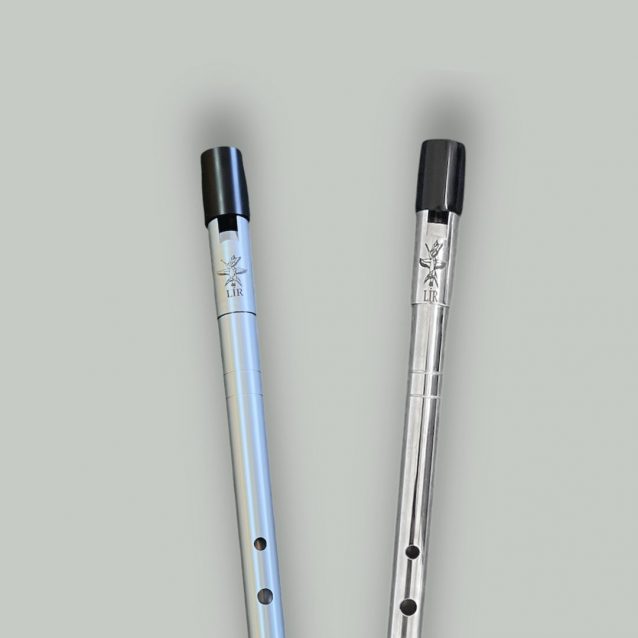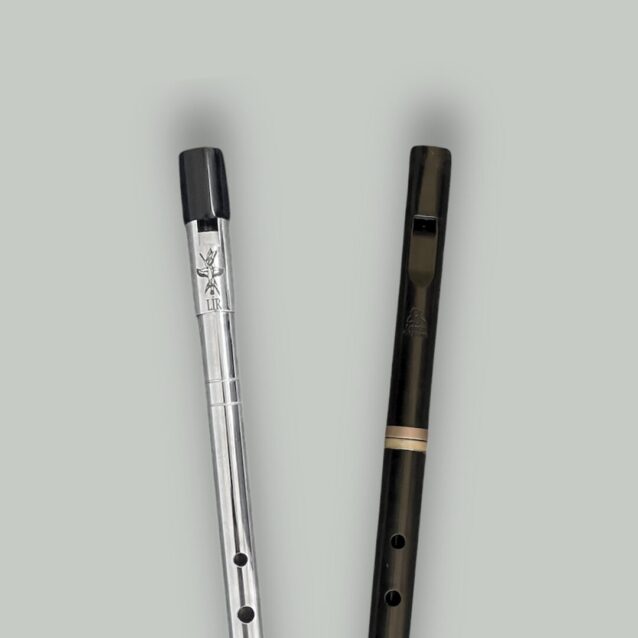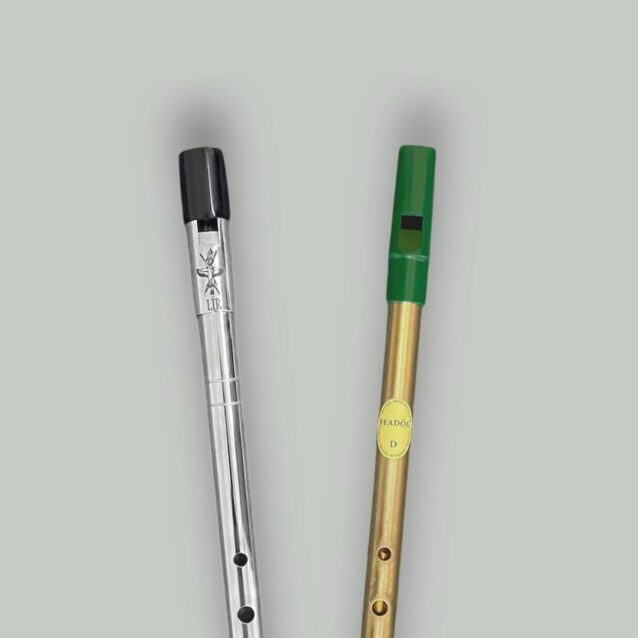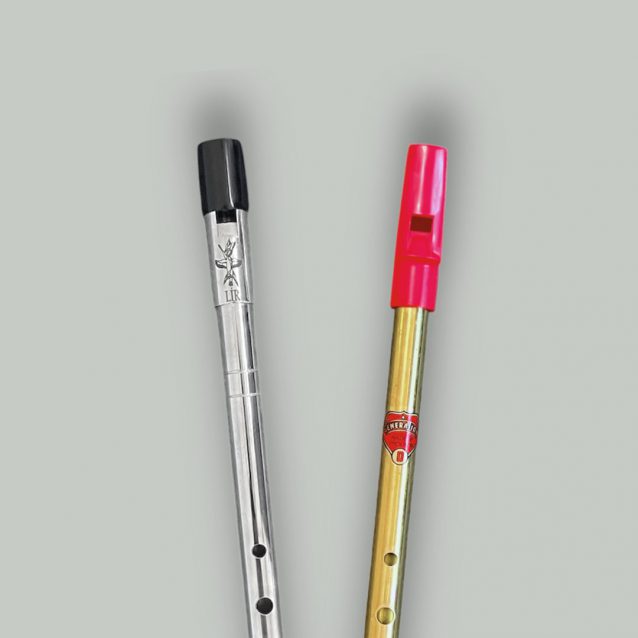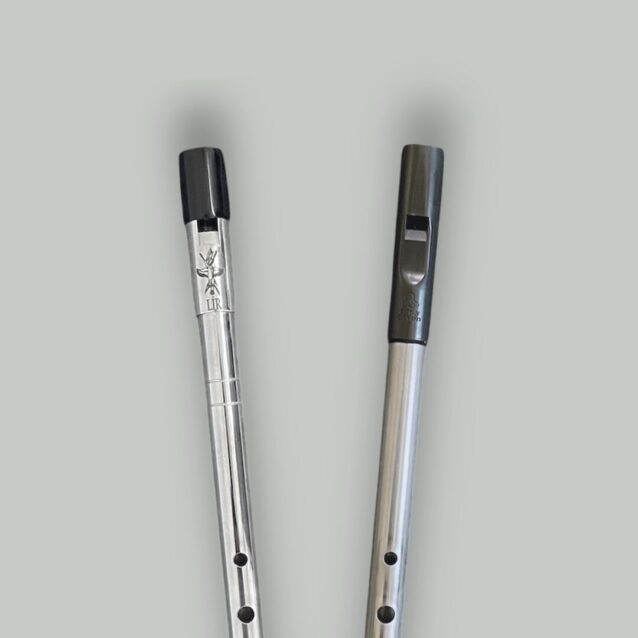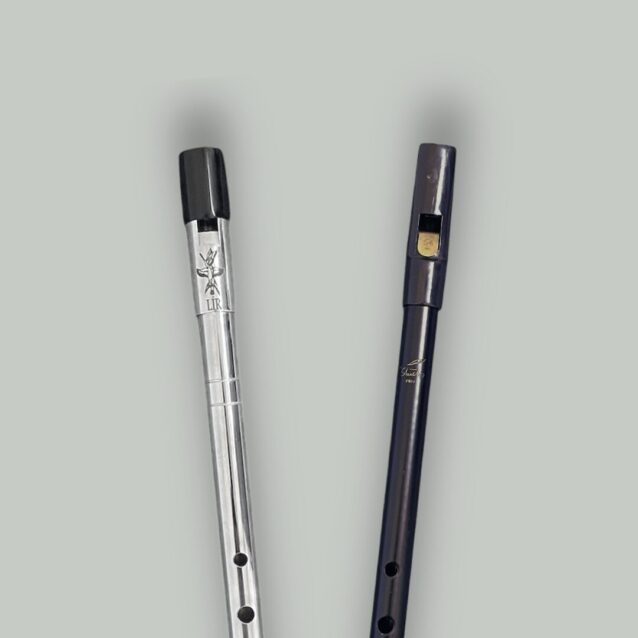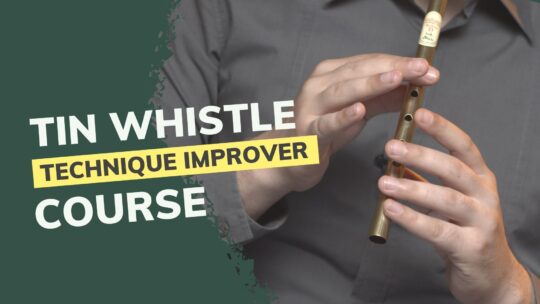Before settling on a lasting design, the team at Lir (based on the west coast of Ireland) spent their first few years experimenting with materials and building prototypes. The first model that really stuck and introduced them to the wider world of handcrafted whistles was the Lir Silver, which we’ll take a closer look at in this review.
Design & build
| Model: | Lir Silver |
|---|---|
| Key: | D (high/soprano) |
| Material: | Brass (silver-plated) |
| Mouthpiece: | Delrin |
| Windway type: | Curved |
| Length: | 292mm (11.49″) |
| Weight: | 97g (3.42oz) |
| Bore diameter: | 12mm (~ 0.47″ or 15/32″) |
| Tuneable: | Yes |
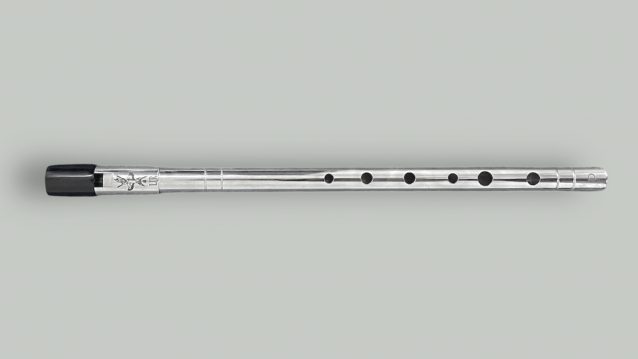
Although the model is called “Silver”, the base material is actually brass. It’s just silver-plated, which gives the whistle that bright, shiny appearance and the overall impression of a high-quality, premium instrument. On top of that, Lir also offers optional custom engraving on the back.
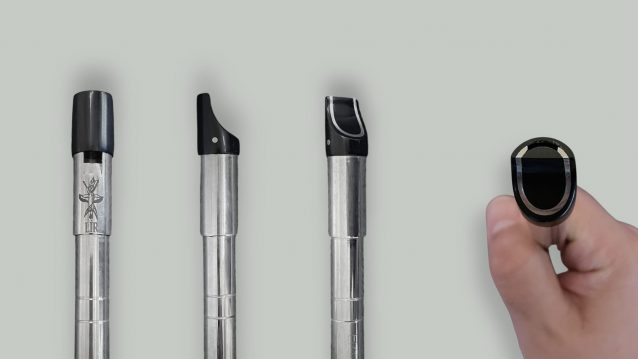
The mouthpiece is made of Delrin and features a curved windway. This design has become fairly standard and is something many whistle makers have adopted from the iconic Sindt whistle style. The whistle is tuneable by default, and everything feels sturdy and well put together.
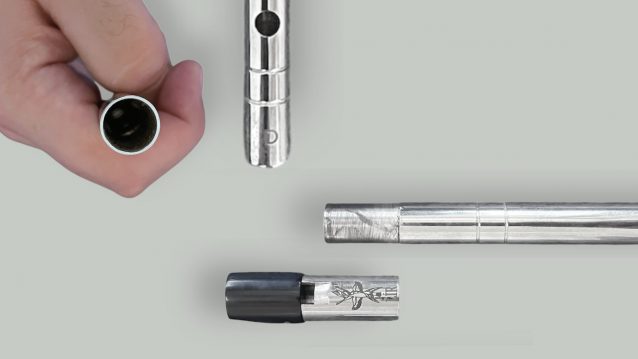
The bore diameter is standard for a high D whistle, on the “narrow side”, so to speak. However, the added silver plating slightly increases the overall tube thickness compared to entry-level models like the Generation or Feadóg.
On the other hand, that silver coating also adds a bit of extra weight, so the whistle ends up being almost twice as heavy as many other high D models. It’s not necessarily a good or bad thing, just something to take into consideration.
Lir Silver – Sound samples and demonstration
The video below features samples from both octaves, beginning with a slower melodic phrase and moving into a faster tune to demonstrate how the Lir Silver responds in different playing contexts.
As you can hear in the samples, the overall impression is a well-balanced tone. The character remains consistent across both octaves and works equally well for slower and faster tunes. The whistle definitely has that traditional feel but without being overly chiffy, nor too mellow — sitting somewhere nicely in between. The upper octave, in particular, has a sweet, ringing quality. Ornamentation comes through clearly and crisply.
The volume is on the “average side” with a good balance between octaves.
Tuning is solid, and C natural plays in tune using the standard “OXX OOO” fingering. Interestingly, the alternative “OXX XOX” is also in tune, with a bit more push.
How it handles from a player’s perspective
The first thing you notice while playing the Lir Silver is that it’s forgiving and easy to control, making it a very pleasant whistle to play. It’s an “easy blower”, but at the same time, it holds up well even if you push a bit more air into it. No overblowing, no squeaking, which beginners will appreciate.
Both octaves are nicely balanced, and what stands out is how consistent the tone remains regardless of how softly or strongly you blow. That kind of stability is not very common, as most whistles tend to noticeably change their tone depending on breath pressure — sometimes becoming breathier, other times sharper or thinner.
If we had to point out a downside, it would be that the whistle is on the heavier side, and the silver-plated surface can feel a bit slippery. Occasionally, a finger might slip slightly, which could cause a missed note or a less precise ornament, especially noticeable in faster tunes. Not a big deal, but maybe something the lads at Lir might consider for the future: an additional brass version without the silver coating that would slightly reduce the weight and improve grip while keeping the same solid playability.
Your thoughts?
Got any questions or impressions about the Lir Silver? Just leave a comment under the Lir tin whistle review video on YouTube — we check in regularly and are always happy to chat, help out, or hear what you think of the whistle!
Lir Silver whistle comparisons
Below are a few quick sound comparisons between the Lir silver D and other tin whistles. Each clip is recorded using the same microphone and settings to give a fair impression of tone and character, with raw, unprocessed sound.
View more Lir Silver comparisons
Please note: due to YouTube’s automatic audio normalization, real volume differences between whistles are effectively removed. That’s actually helpful in this case — since louder sounds are often perceived as better to the human ear on a subconscious level, this allows you to focus more objectively on tone, texture, and response.
Where to buy this whistle
If you’re thinking about picking up the Lir Silver, here are a few trusted places where it’s usually available. The price is typically around $100, which makes sense given the hand-crafted build and premium materials.
- Lir Whistles (Ireland, ships worldwide)
- BigWhistle (UK, ships worldwide)

